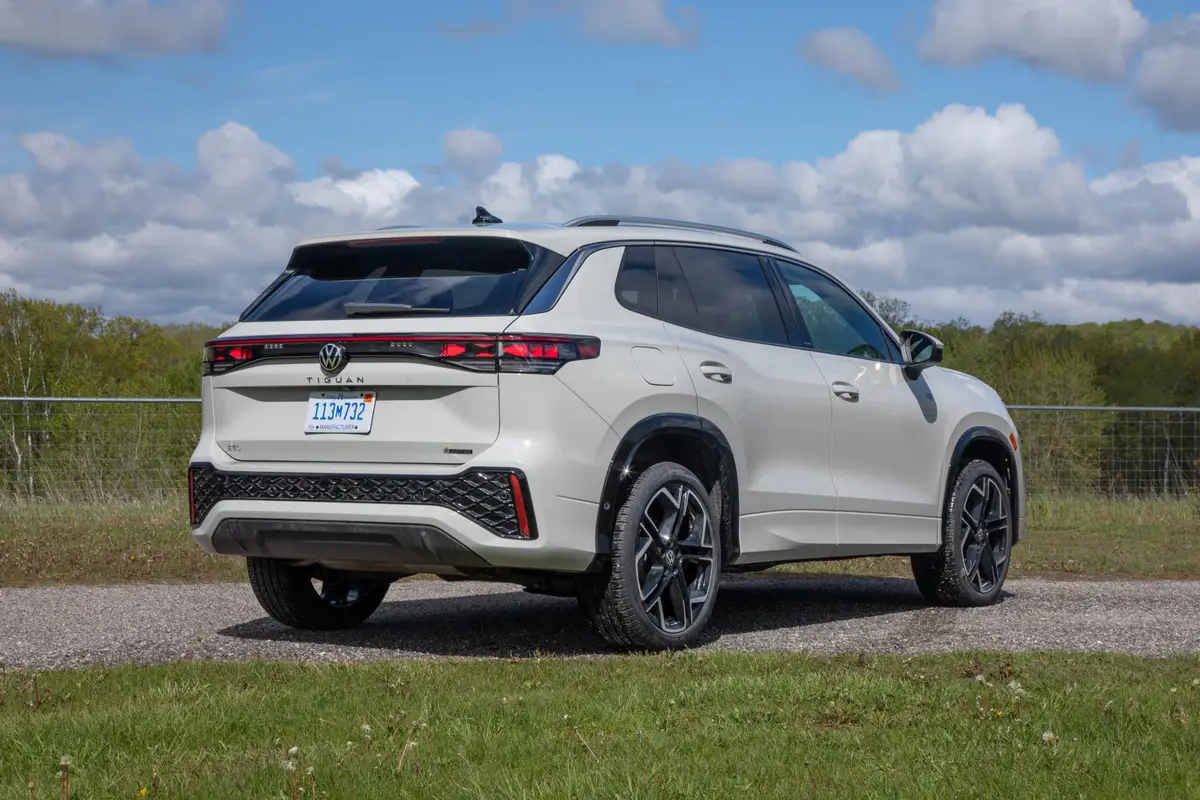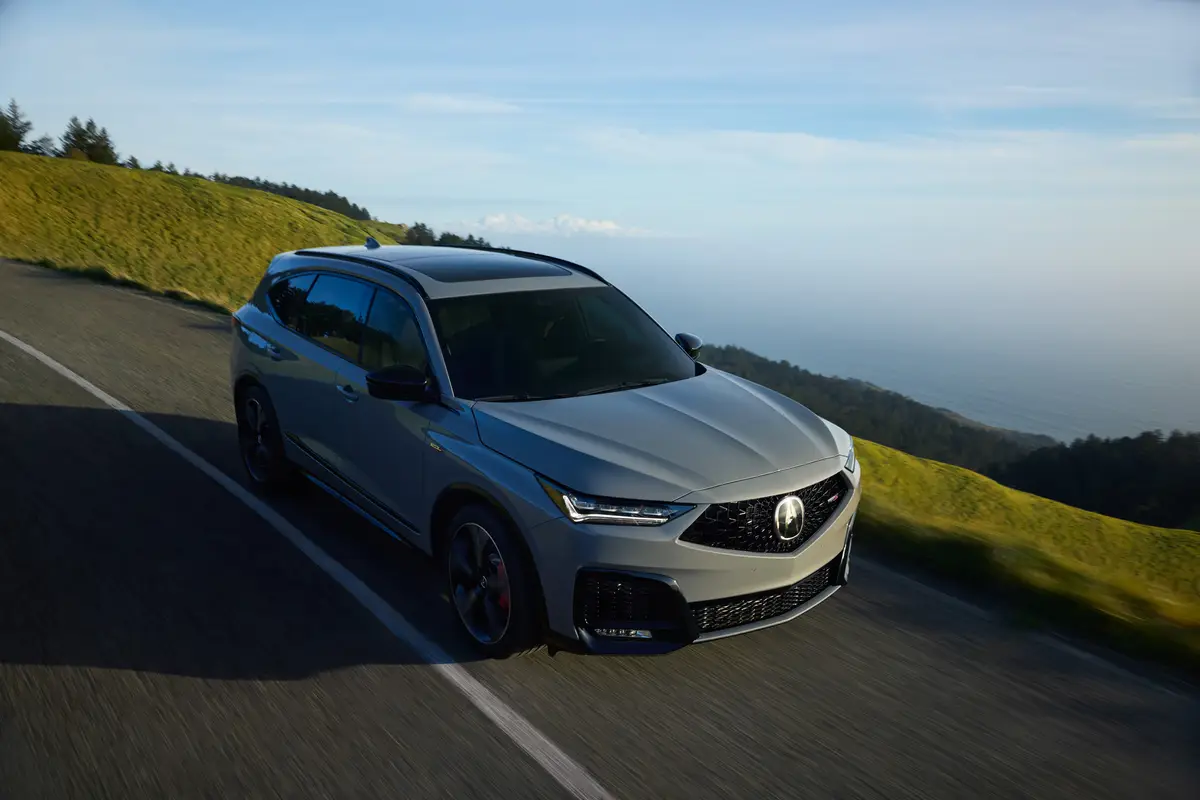KansasCity.com's view
AUSTIN, TEXAS — The Dodge Ram and Dakota pickups have been quite successful for Chrysler Corporation. Ram sales jumped from 73,000 in 1993 to 400,000 in 1996, and the all-new Dakota is predicted to sell about 120,000 units in its first year. Now, along comes the Dodge Durango, a Dakota-based sport-utility vehicle (SUV) that is sure to be another hit.
This eight-passenger Dakota clone is targeted at buyers who want a rugged vehicle that is bigger than the Ford Explorer or Chevy Blazer yet smaller than the Ford Expedition or Lincoln Navigator. Chrysler calls it a “Smart Size” SUV because it offers the maneuverability of compact SUVs and the towing and hauling capacity of larger ones.
The four-wheel-drive SLT with the 5.2-liter V8 begins at $28,025 and would be $28,970 with a third-row seat. This is expected to be the most popular version. A loaded model with leather and the biggest engine would be about $32,000.
Durangos are just now beginning to trickle into dealers as production gets underway.
Chrysler invited journalists to Austin to drive various Durangos and three other new products, including the Chrysler Concorde, Dodge Intrepid and the Dodge Ram Quad Cab. Today I am concentrating on the Durango and will cover the Concorde and Intrepid in the next issue.
Durango is built on a 115.9-inch wheelbase. All front sheet metal and the front section of the frame are identical to the Dakota. The back two-thirds of the frame has been widened for greater passenger space. Of course, the rear sheet metal is unique to the Durango, although the taillights have been borrowed from the minivan.
There are three engines: a 3.9-liter V6 with 175 horsepower; a 5.2-liter V-8 with 230 horsepower; and a 5.9-liter V8 with 245 horsepower. The V6 won’t be offered until next spring, and a two-wheel-drive model will have to wait until 1999.
The total project took 23 months and cost $1.1 billion, including $319 for a new paint shop at the Newark, Del., plant.
While in Austin I had brief drives in both the 5.2-liter and 5.9-liter models. The larger engine can tow 7,300 pounds and has a payload of 1,800 pounds.
Dodge describes the Durango as a vehicle for an active lifestyle rather than one intended for luxury, so while it is available with leather seats, its emphasis is practicality and versatility.
The interior is loaded with handy features, such as third-row seating that folds into the floor and a 40/20/40 rear seat whose outboard sections tip forward in one motion to open up access to the third row of seats. When the seat is tumbled forward the legs have built-in hand grips to aid climbing in back.
The roof is raised two inches from the second seat back to improve rear-seat headroom as well as to expand cargo volume. A luggage rack cleverly hides the raised roof. Overall height is 72.9 inches, including the rack. The rear air conditioner is mounted at the front of the raised area to save space.
Unlike some of its competitors, the Durango’s third seat does not have to be removed in order to take advantage of the cargo space, and that is crucial to active folks who might want to haul kids one minute and camping gear the next.
With both seats folded flat the load floor slopes slightly uphill but not enough to be a problem. It is long enough to sleep in, should you want.
Preview drive
We sampled various Durangos on a variety of roads, from smooth highway to steep and rocky off-road tracks. As you would expect, it feels much like a Dakota pickup. The ride is firm but compliant, certainly comfortable in most situations. Although my driving partner thought the ride was a tad rough, I liked its solid feel and car-like agility. Durango sits one inch closer to the ground than the Dakota for ease-of-entry and better handling.
Off-road, we shifted into four-wheel High for climbing, and it walked over football-sized boulders with ease. The route was challen ng enough to get a feel for the Durango’s rugged abilities without being so tough that it required extra-low gear.
Selecting four-wheel drive is done with a floor-mounted lever, while most of its competitors offer electronic actuation with a dash switch. An optional full-time four-wheel-drive system is available for those who want the security of driving all four wheels all the time.
Rear-anti-lock brakes are standard and four-wheel-anti-lock optional.
The dash, which has large readable gauges, is lifted directly from the Dakota, as are the front seats, which are firm and provide good lumbar support. Airbags are lower-powered, second-generation designs. There are numerous storage bins and cupholders throughout the vehicle.
I drove both the 5.2-liter and 5.9-liter models. The larger engine is best for pulling trailers and heavy loads, but the 5.2 acquitted itself well in regular driving. For normal city driving, most folks will choose the smaller engine because of cost and economy.
Until I get a chance to spend more time with a production version I will reserve judgment, but based on first impressions the Durango offers a good compromise between car-like comfort and truck-like ruggedness. It offers almost as much space as the bigger SUVs, yet it drives like a smaller one and is priced accordingly.
Price
The base price for an SLT with the 5.2-liter engine and third seat will be $28,970 including freight.
Warranty
Three years or 36,000 miles.
Vehicles for The Star’s week-long test drives are supplied by the auto manufacturers.
SPECIFICATIONS:
ENGINE: 5.2-liter, V8
TRANSMISSION: Automatic
WHEELBASE: 115.9 inches
CURB WEIGHT: 4,689 lbs.
BASE PRICE: $28,025
PRICE AS DRIVEN: not available
MPG RATING: 13 city, 17 hwy.
Latest news



